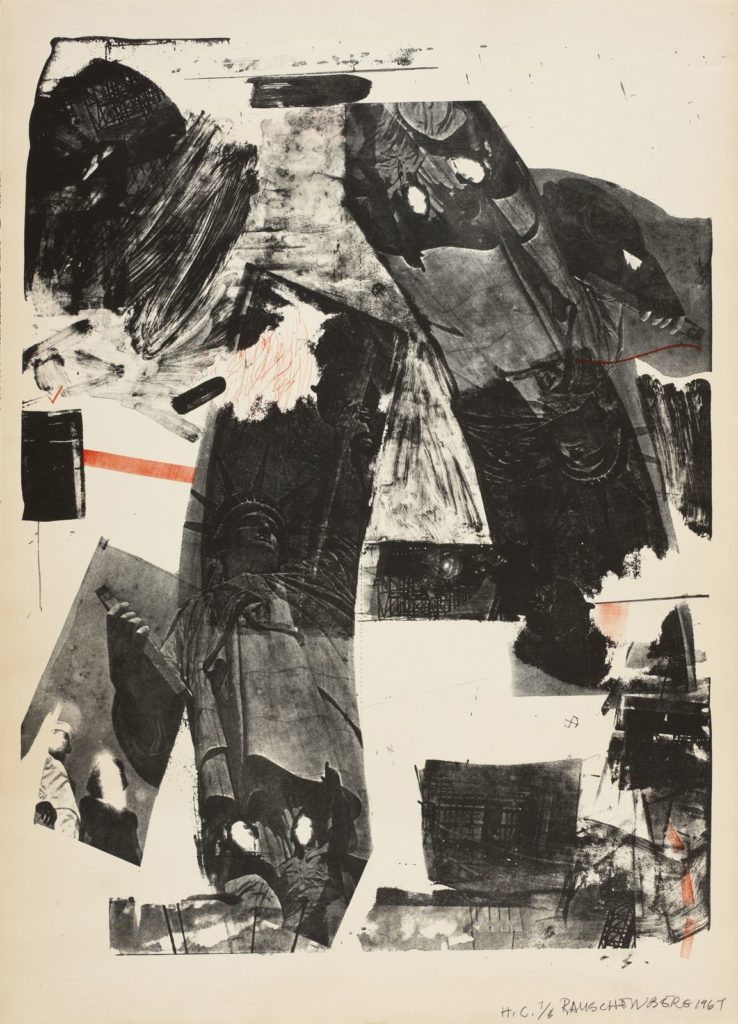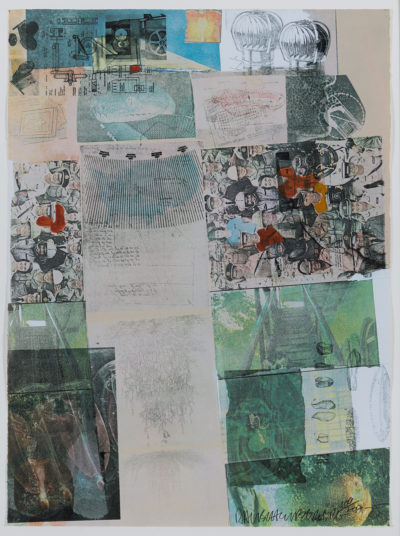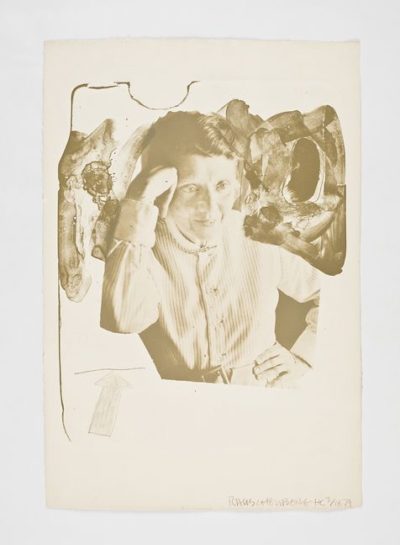Front Roll, 1964
Rauschenberg began making lithographs at the Universal Art Print Workshop in 1962, where he developed techniques to dissolve and transfer photographic images from newspapers and magazines onto his lithographic prints. Nearly a decade earlier he had challenged the introspective canvases of the abstract expressionists with works he called ‘combines’, mixed-media collages incorporating discarded objects and found images to reflect the urban environment in its totality. These unprecedented objects not only brought the materials of the city into the gallery but necessitated a new mode of viewing, which Brian O’Doherty termed ‘the vernacular glance’. He coined the latter for a kind of looking that ‘carries us through the city every day’, defined by its lack of discrimination and its wandering attention.’ In Front Roll, Rauschenberg merges mechanically reproduced found images of the Statue of Liberty with his own gestural marks, in a manner that produces multiple and simultaneous combinations. This print represents a second method that Rauschenberg devised for transferring existing images onto lithographic stones. In this case, commercial photo-screenprints were prepared from Rauschenberg’s own photographs and other images. Lithographic tusche, a liquefied inky substance, was screened directly onto the printing stone, which was then prepared in the normal manner.
| Medium | Lithograph in colours |
| Dimensions |
Unframed, 104.5 x 75.4 cm Framed, 111.5 x 85.5 cm |
| Credit Line | IMMA Collection: The Novak/O'Doherty Collection at IMMAGift, The American Ireland Fund, 2014 |
| Edition | H.C. 7/8 (aside from the edition of 39) |
| Item Number | IMMA.3861 |
| On view | Art as Agency, IMMA Collection: 2025-2028, 08/02/2025 - 07/01/2027 |
| Copyright | For copyright information, please contact the IMMA Collections team: [email protected]. |
| Tags |



